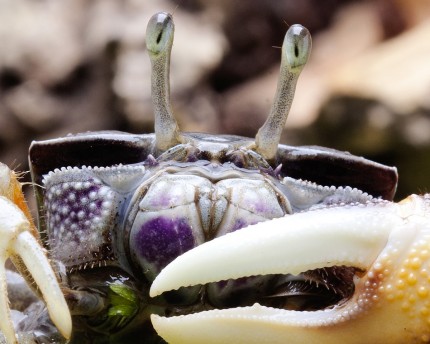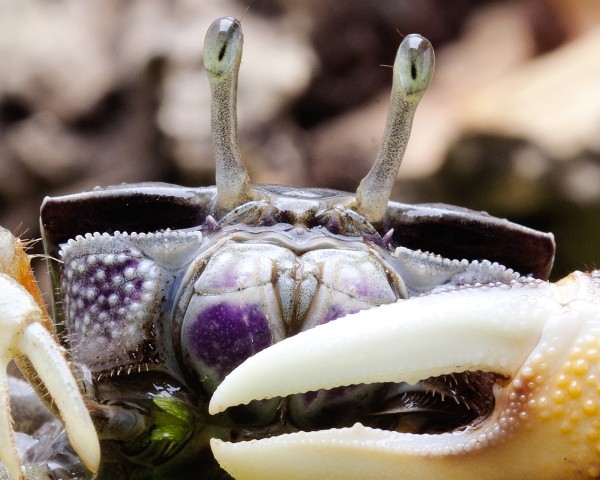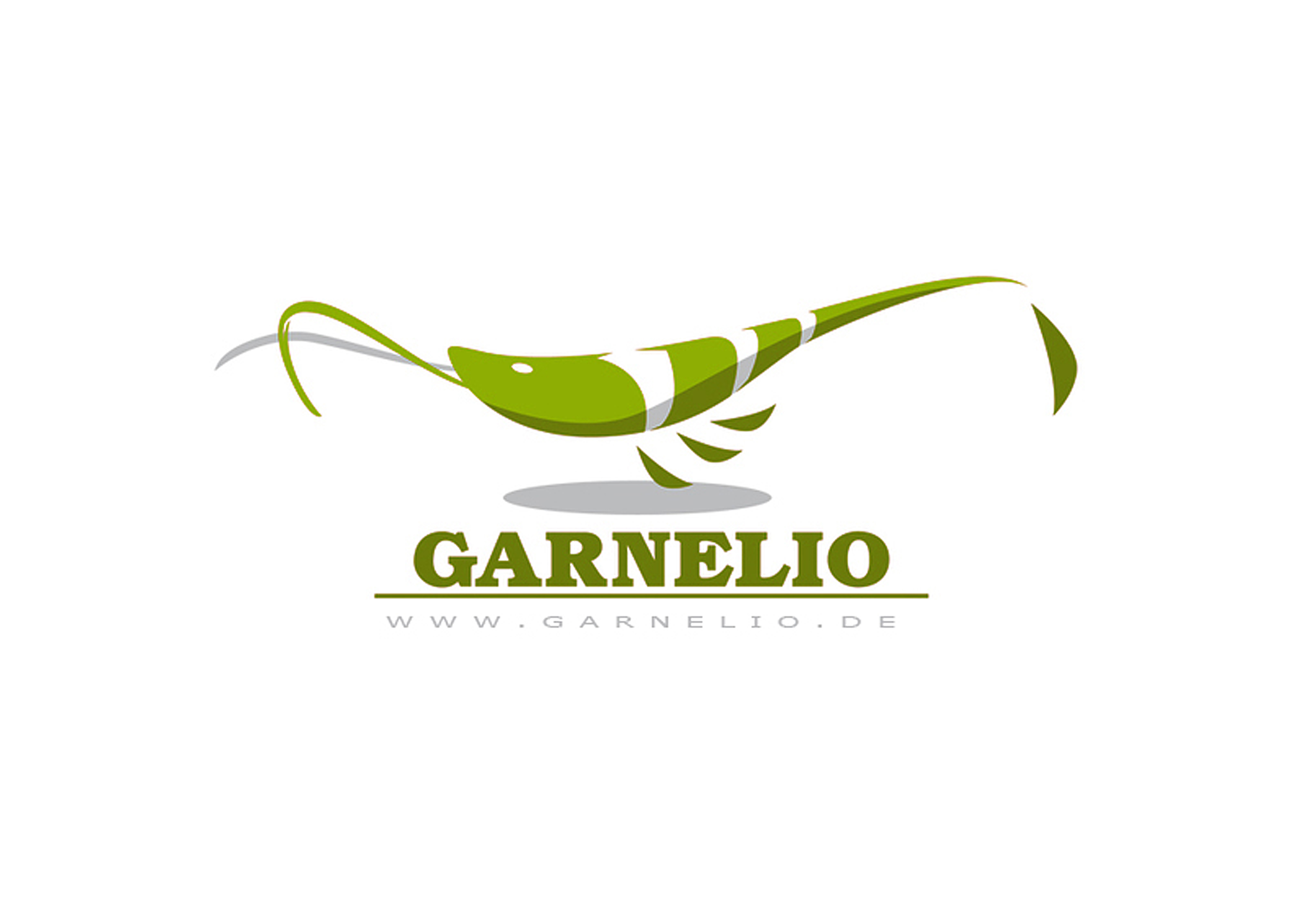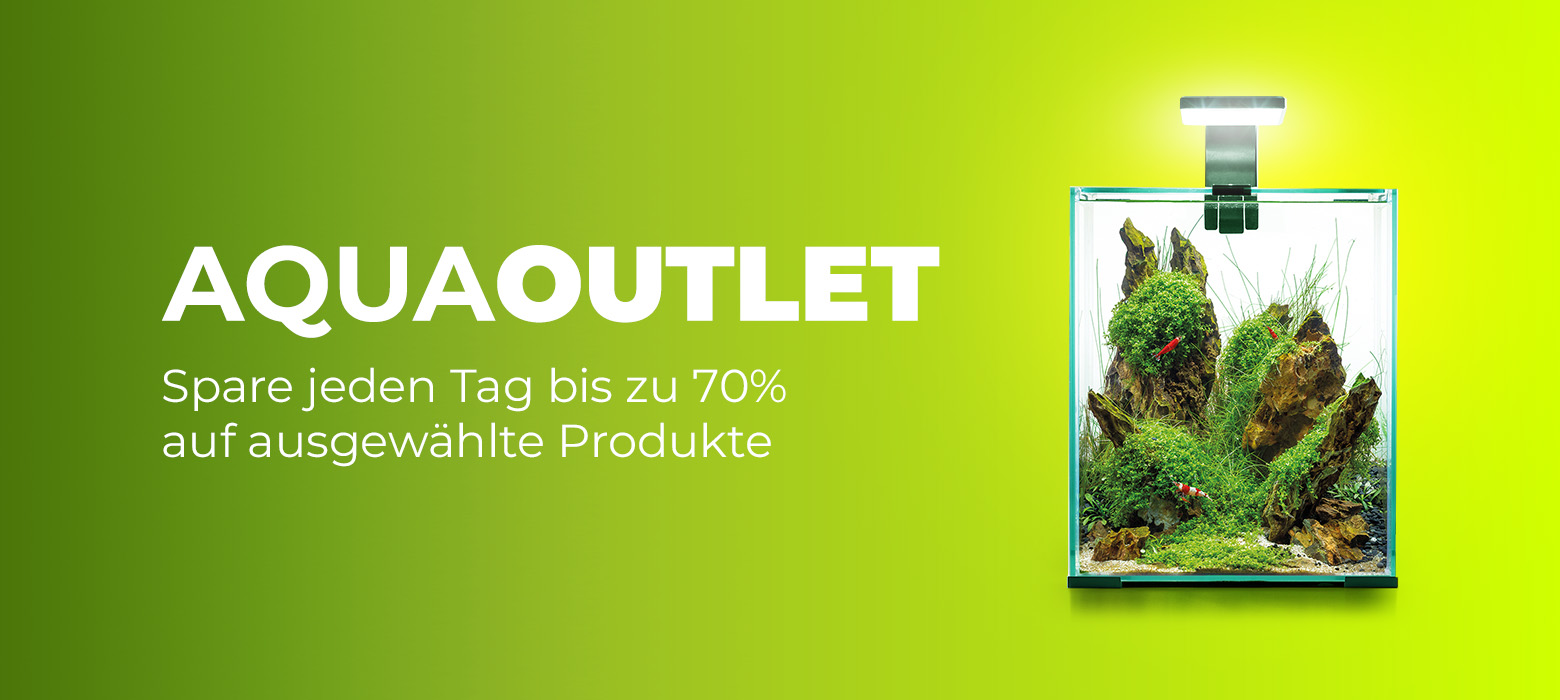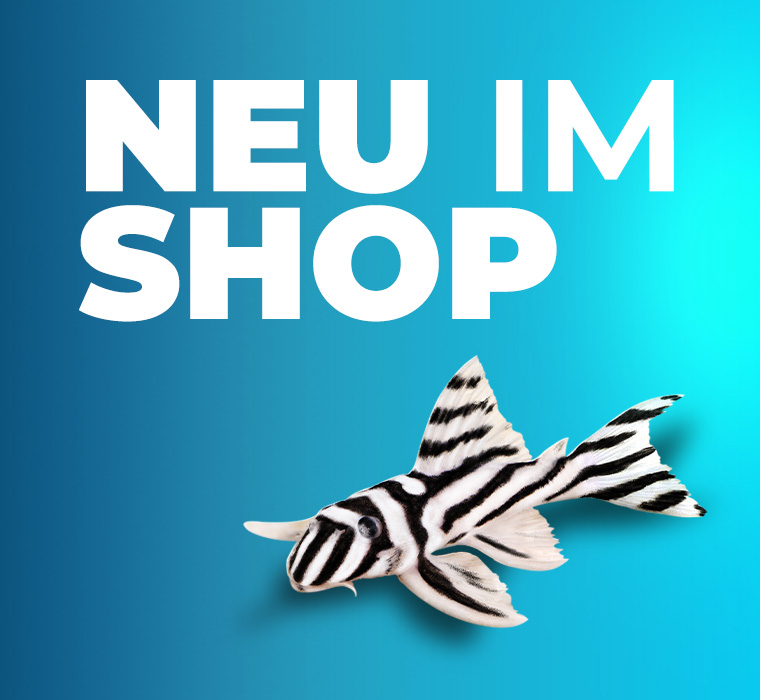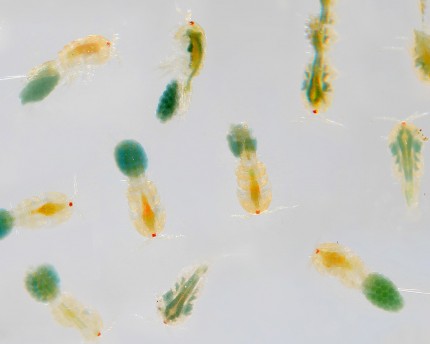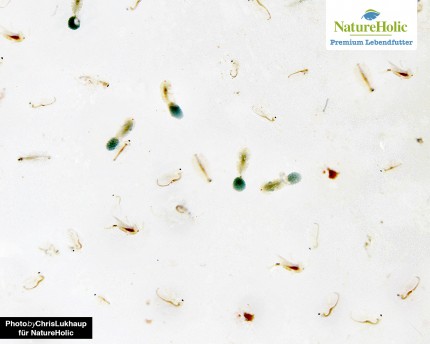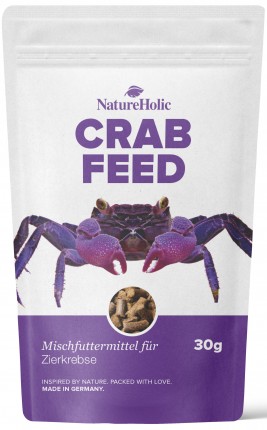- Item no: 1194
Fast delivery times
All products are in stock with us!14 years of breeding experience
Let our team of experts advise you!High customer satisfaction
from over 3,000 reviews "The European fiddler crab Uca tangeri is variably colored brown, beige, purple, orange and white. The males captivate by their unusually differently large claws. There are right and left handers. The unusually enlarged scissors (they can make up to 75% of the body weight!) serve them only for communication, they are neither good for eating nor for fighting. The males wave it (hence the name fiddler crab) at mating time to attract females. The females seem to prefer the males with the largest claws for this. Their carapace diameter of 6 cm makes the fiddler crab a rather small crab. As the name suggests, Uca tangeri is mainly found along the coasts of the Eastern Atlantic.
After the fascinating mating ritual, in which the male fiddler crabs just give everything to get the females into their burrow, the females of the European fiddler crab carry a large number of small eggs under the U-shaped flap on their abdomen for several weeks. The abdominal flap in males is narrower and tapers off into a point, making it very easy to distinguish the sexes. After the end of the gestation period, free-swimming larvae are released into the sea, where they develop into crabs. In the hobby Uca tangeri has not been bred yet, but the rearing of the larvae should be similar to that of other crabs with marine larval stages.
In nature the fiddler crab lives in large colonies on the beach on sandy ground. There the animals build their living and breeding tubes. The gills of the fiddler crab are modified in such a way that it can only breathe air, in too high water it would drown. In an aquaterrarium, the land-living fiddler crab needs a low water section with seawater or brackish water with about three to four centimeters of water height and a land section at least 10 cm high with sand in which living tubes can be dug. The terrarium can be structured with wood and stones so that the animals can avoid each other, for example after a moult. Temperatures from 18 to 32 °C are well tolerated by the fiddler crab.
Since Uca tangeri is a very social group animal with an incredibly fascinating communication, it must not be kept alone. We recommend an aquaterrarium with an edge length of at least 100 cm and a group of eight animals, if possible with a surplus of females or four pairs.
Fiddler crabs are skilled climbers. Especially the lighter young crabs can even shimmy up silicone seams. The aquaterrarium must therefore be covered absolutely tightly so that no crab can escape
The fiddler crab eats mainly plant remains, but does not say no to the one or other insect. Overall, it is an omnivore and should be fed a correspondingly balanced diet: freeze-dried stream fleas or insects, frozen food, fine flakes, algae powder, raw fish, but also ready-made food for omnivorous crabs.
Our food recommendation: Crabs in the wild tend to have a very varied diet. Most species are omnivores, and with the Natureholic Crab Feed Sticks we have taken this preference into account. They contain biologically balanced animal and vegetable components, which are also part of the natural food spectrum of omnivorous crabs in the field in such or such a similar way. The valuable ingredients of NatureHolic Crab Feed naturally support the molting, digestion, growth and reproduction of your crabs.
Our plant recommendation: For planting, use marsh plants, which are plants that are rooted in soil that is very wet or even submerged, but whose flowers and leaves are usually all or partially in the airspace and can be seen above the water surface. Thus, marsh plants are usually found on and in lakes and streams, but also on and in garden ponds or other bodies of water that provide them with a wet substrate, but still leave room for flowers and leaves to show to the outside.
Expert Tip: We recommend NatureHolic 3 Phase Liquid when keeping invertebrates. The care set offers the best all-round protection for your invertebrates. It ensures optimal conditions for successful breeding and keeping.
| Scientific name | Uca tangeri (Eydoux, 1835) |
| German name: | Fiddler crab |
| Difficulty level: | for beginners |
| Origin/distribution: | Eastern Atlantic |
| Coloration: | variable purple, orange, beige, brown, white, yellowish |
| Age expectancy | 2-3 years |
| Water parameters: | Sea water to brackish water, temperature 18 to 32 °C |
| Tank size: | from 100 cm for a group of 8 animals |
| Food | freeze-dried brown shrimp or insects, frozen food, fine flakes, algae powder, raw fish, ready-made food for omnivorous crabs |
| Reproduction | very difficult, as larvae need brackish water and special food |
| Behavior | very social colony forming group animal |
| Socialization | |
| Further information | Colorful jewels in the terrarium - land crabs of the genus Geosesarma, micro crabs, Limnopilos nayanetri - The smallest crab in the world!, Keeping mangrove crabs |
- Item no: 1194
Entdecke die Garnelio Welt!
Garnelio gehört zu den größten Onlineshops für wirbellose Aquarientiere weltweit.
Viele Artikel gibt es exklusiv nur bei uns im Shop.

